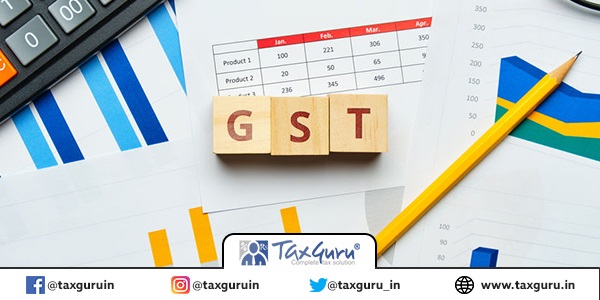In the previous part of this article, we had discussed the updates pertaining to GSTR-3B and R-1. To read the same, kindly refer to the link – (https://taxguru.in/goods-and-service-tax/forthcoming-amendments-gst-returns-part-1.html)
In this article, we would be discussing the important aspects to be considered by the taxpayers due to the implementation of Form GSTR-2B w.e.f. 01st January 2021.
GSTR 2B – Introduction of conditions to avail input tax credit w.e.f. 01-01-2021.
Amendment has been made in Rule 60 of CGST Rules, to introduce the form GSTR-2B which would be a monthly auto-drafted statement containing the details of input tax credit available to a registered person based on:
- Form GSTR-1 filed by his supplier within its due date (who opted for monthly filing),
- Form GSTR-6 filed by its Input Service Distributor within its due date
- Invoices uploaded in Invoice Furnishing Facility (IFF) by his supplier within its due date for the first and second month of the quarter (who opted for quarterly filing) & Form GSTR-1 filed by him for the third month of the quarter within its due date and
- Details of Integrated Tax paid on import of goods or goods procured from SEZ or developer to DTA.
Such auto-drafter statement would be made available to the registered person as follows:
- For the first and second month of the quarter, the day after the –
- Due date of furnishing outward supplies in IFF by quarterly filers (or)
- Due date of furnishing GSTR-1 by monthly regular filers
Whichever is later.
- For the third month of the quarter, the day after the due date of furnishing GSTR-1 by the quarterly filers.
Features and Advantages of GSTR-2B
It is a static document, unlike GSTR-2A which is dynamic. i.e. the figures in GSTR-2B once generated would not get altered due to any subsequent filing of returns by the supplier. Any subsequent filing would be updated in the subsequent GSTR-2B. For example, GSTR-2B generated for the month of February 2021 will consist of all the documents filed by suppliers in their GSTR-1/IFF from 00:00 hours on 14th February 2021 to 23:59 hours on 13th March 2020.
The format of GSTR-2B resembles Table 4 of GSTR-3B which makes it easy for the taxpayer to understand the same.
Moreover, it also considers the input tax credit portion in imports and SEZ procurements made by the taxpayer in DTA and reminding him to take the credit on the same.
Link to Input Tax Credit availment
The GSTR-2B has been inserted in rules for Form and manner of ascertaining details of inward supplies.
In terms of Rule 36(4), there is a restriction to avail the input tax credit on invoices or debit notes which have not been uploaded by the supplier. Only an additional extent of 10% of the eligible credit available in respect of invoices or debit notes the details of which have been uploaded by the suppliers under sub-section (1) of section 37 is being allowed.
Based upon the notified amendment, the invoices, debit notes pertaining to outward supplies would be uploaded by the registered persons in their Firm GSTR-1/Invoice Furnishing Facility as the case may be.
The details of outward supplies uploaded by the suppliers in their GSTR-1/IFF as the case may be would be made available to the concerned registered persons through the common portal in Part A of Forma GSTR-2A, 4A, 6A.
Further, GSTR-2B is an auto-drafted statement containing details of outward supplies uploaded by the suppliers in their GSTR-1/IFF as the case may be.
The present amendment does not specifically express anywhere that, GSTR-2B has to be considered for the purpose of Rule 36(4). This confusion may arise since the statement under GSTR-2A/4A/6A is still available to the registered person based upon the outward supplies furnished by their suppliers under S 37(1) of the CGST Act.
Actions from the end of the recipient in all B2B supplies
Being the GSTR-2B a static document, one may not be able to avail the credit first and then have a subsequent follow up with the suppliers. In such cases, interest on excess availment of credit would arise and it would be an additional cost of compliance.
It is suggested to implement a system the accounts payable team should verify and get it ensured that the relevant invoice pertaining to the transaction is reflected in GSTR-2B of the concerned period prior to making a payment towards the same.
If invoices are not being reflected, the recipient can withhold the GST portion of the invoice and wait till the invoice is being reflected in GSTR-2B subject to the time limit specified under section 16(4).
Further, the above conditions can be entered in writing between the parties in their terms/P.O/agreement to avoid any dispute with the regard to bearing the incidence of tax in the future due to non-compliance.
Conclusion
From the above discussions following could be summarized:
- The proposed structure of GSTR-2B is more comfortable to the taxpayer due to its static nature, inclusion of credit pertaining to Import of Goods, procurement from SEZ.
- The format of GSTR-2B aligning to the format of GSTR-3B assists the taxpayer to understand the reflected figures easily.
- The government should clarify on what grounds the figures in Table 4 of GSTR-2B – “ITC not available Summary” is being generated i.e. from which return such data are being collated.
- Moreover, it is also expected to be clarified whether Rule 36(4) regarding the condition to avail input tax credit is linked with GSTR-2A/4A/6A or 2B to do away with any muddling up.
The proposed notified amendments are in line with the structure of GST law to make the regular compliance by the taxpayer a system driven and also assisting the taxpayers to reduce their cumbersome return filing activities. However, the actual benefit of such amendments would be passed on to the industry only based upon the smooth implementation of the same.
Further, it is also important to taxpayers to intimate promptly to their suppliers to get their invoices updated regularly within the due date in their GSTR-1 / IFF as the case may be in order to have a smooth and robust compliance in this system driven law.
For ay clarification, suggestion/feedback in this regard, kindly get in touch at arjun@hiregange.com






